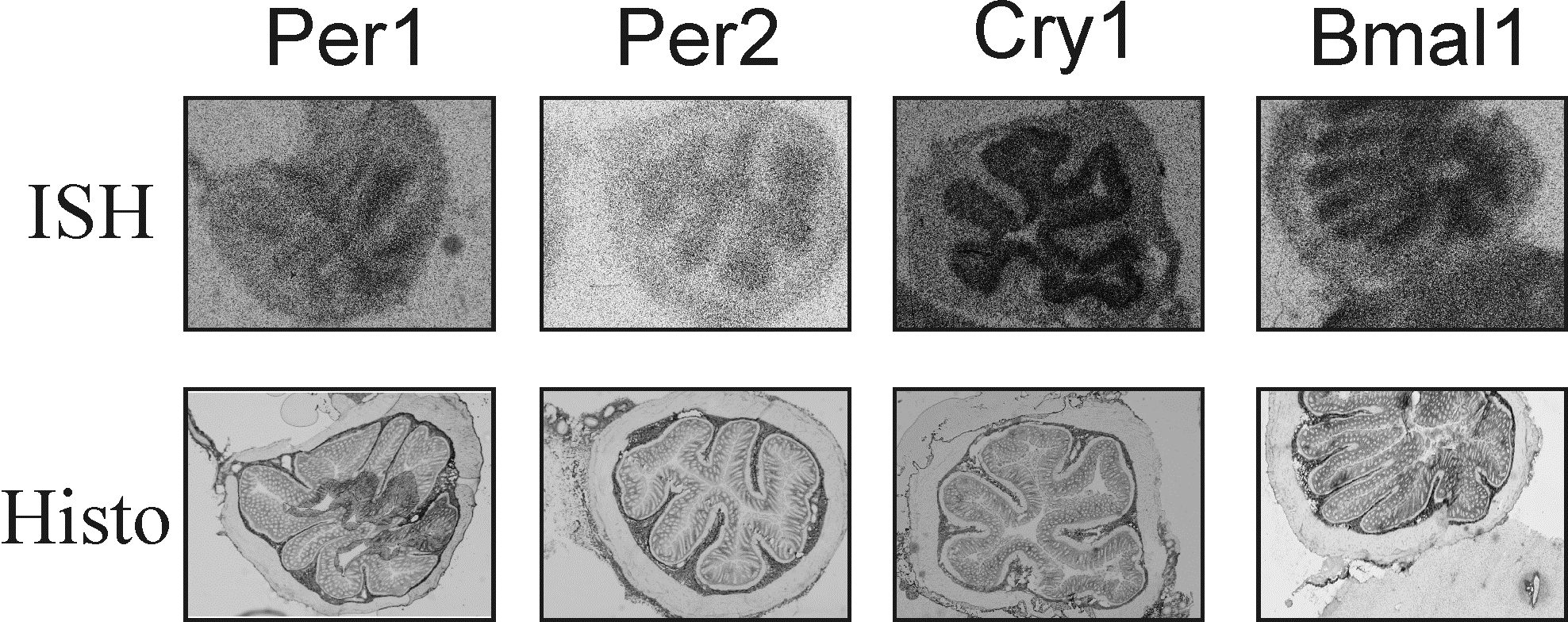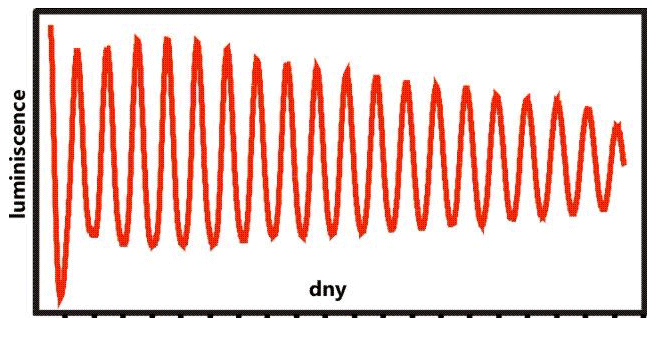Circadian clock and mechanisms of entrainment
We explore the entrainment of the circadian clock and its disorders on various experimental models in vivo and in vitro.
The circadian clock is running autonomously, i.e. without external stimuli. The regular daily rhythm is generated on a single cell level as a product of molecular machinery of periodically activated and inactivated clock genes. The central clock in the suprachiasmatic nucleus is a network of individual clock cells that receives information about external time, as in order to successfully predict regular daily changes in the environment, the clock must be entrainable (time-adjustable). We explore the entrainment of the clock and its disorders on various experimental models in vivo and in vitro.
The timing system in our body is called the circadian system, as it regulates "about daily" (from latin. "circa dien") rhythms. The system integrates the timing of most of the processes in the body - from the molecular (gene expression) and biochemical (enzymatic activity) levels, through physiological functions (body temperature, hormonal secretion, or energy metabolism), to the highest and most complex processes (sleep, food intake, complex behavior). Our laboratory uses transgenic and inbred strains of mice and rats to study the circadian rhythms at all of these levels.
The clock in the suprachiasmatic nuclei - our laboratory was among the first to demonstrate the molecular mechanism for encoding information about the photoperiod (i.e. the length of the light part of the day, which changes during the year in our climate) in both the central and peripheral clock.
The clock in the large intestine (colon) - our laboratory was the first to describe the circadian clock at the molecular level in the lining of the colon. These clocks are entrained by food intake and the passage of chyme and regulate a number of site-specific physiological processes.

Clock gene expression in the epithelium of the rat colon.
Entrainment of the circadian clock in vitro - as models, we use transgenic PERIOD2::Luciferase mice (see insert) or cell cultures with added reporter (clock regulated segment of DNA linked to luciferase gene), which allow us to directly monitor the clock at the molecular level. The clock can be entrained for example by using an external temperature cycle or various biologically active substances.
 A transgenic mouse, in which, through the means of a specific recombination (knockin), a gene for one of rhythmically regulated clock proteins (Period2) was replaced for the same gene fused together with the gene for the enzyme luciferase. Luciferase is responsible for the catalysis of reactions allowing luminescence of fireflies. Therefore, in the presence of a substrate (luciferin), the cells and tissues of the mice luminesce in a regular circadian rhythm. This allows us to accurately and non-invasively examine the clock mechanism and its responses to stimuli in real time at a molecular and cellular level.
A transgenic mouse, in which, through the means of a specific recombination (knockin), a gene for one of rhythmically regulated clock proteins (Period2) was replaced for the same gene fused together with the gene for the enzyme luciferase. Luciferase is responsible for the catalysis of reactions allowing luminescence of fireflies. Therefore, in the presence of a substrate (luciferin), the cells and tissues of the mice luminesce in a regular circadian rhythm. This allows us to accurately and non-invasively examine the clock mechanism and its responses to stimuli in real time at a molecular and cellular level.
The health importance of temporal regulation of bodily processes - metabolic disorders and cancer
The circadian system, metabolism and cell cycle are interrelated and changes in one system may affect the other; chronic disruption of the timing system may for example lead to development of serious metabolic disorders such as diabetes and metabolic syndrome and increased incidence of various cancers.
Our laboratory investigates the connection between these systems on various models.
The circadian system of hypertensive rats - our laboratory has shown that the circadian system of hypertensive inbred rat strain has different characteristics compared to healthy Wistar. We investigate whether these differences may be related to the development of metabolic disorders.
The role of the circadian system in the pathogenesis of colorectal cancer (in collaboration with the Department of the Epithelial Function). We use various models (cell and tissue cultures, induced or subcutaneously transplanted tumors in immunosuppressed transgenic mice) to determine, whether the disruption of the circadian system is associated with increased formation of tumors in the colon.
The crosstalk between the endocannabinoid and circadian systems
Endogenous cannabinoid (EC) signaling is an important system of intercellular communication, affecting a vast array of bodily functions ranging from sensory perception and mood, to food consumption, fat storage, thermogenesis and glucose metabolism. Metabolic disorders such as those caused by obesity are often accompanied by dysregulation of both endocannabinoid and circadian systems. In our laboratory, we investigate how biological timing affects the endocannabinoid system activity and how the endocannabinoids modulate circadian clock and its response to metabolism.
We use locomotor activity monitoring, LCM-RT-qPCR, immunohistochemistry and LC-MS/MS to analyze the regulation of EC components in vivo and their role in entrainment of circadian clock in Wistar rats. We use luminescence monitoring of luciferase reporters to examine whether genetic or pharmacological manipulation of endocannabinoid system affects circadian clock in vitro in cell lines and in organotypic tissue explants from transgenic mice.
